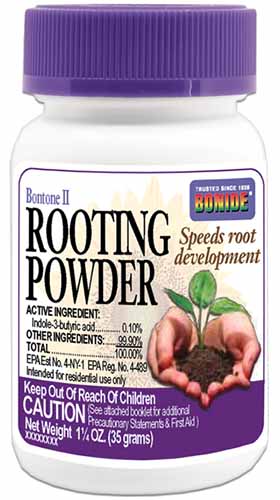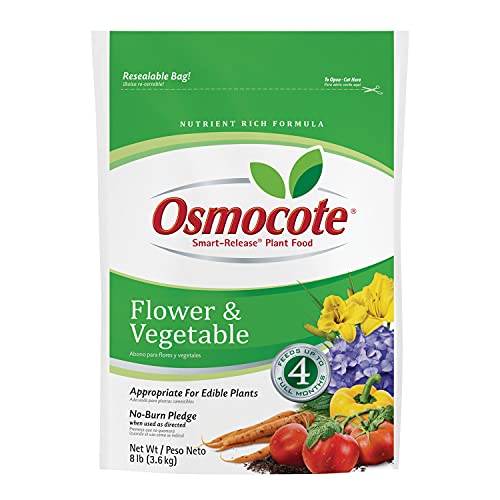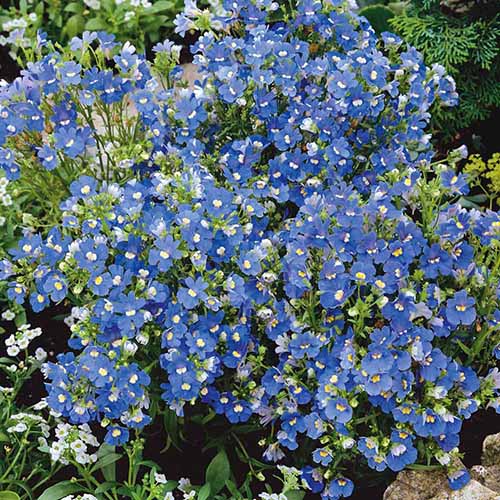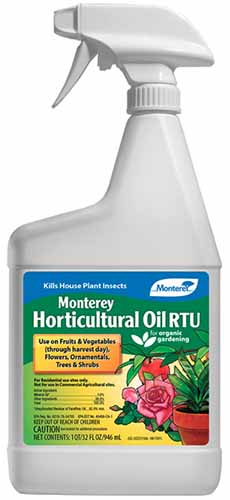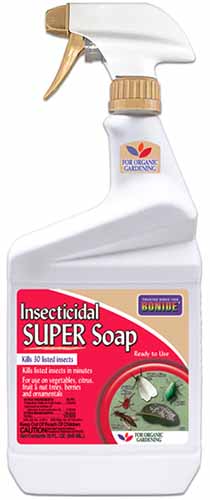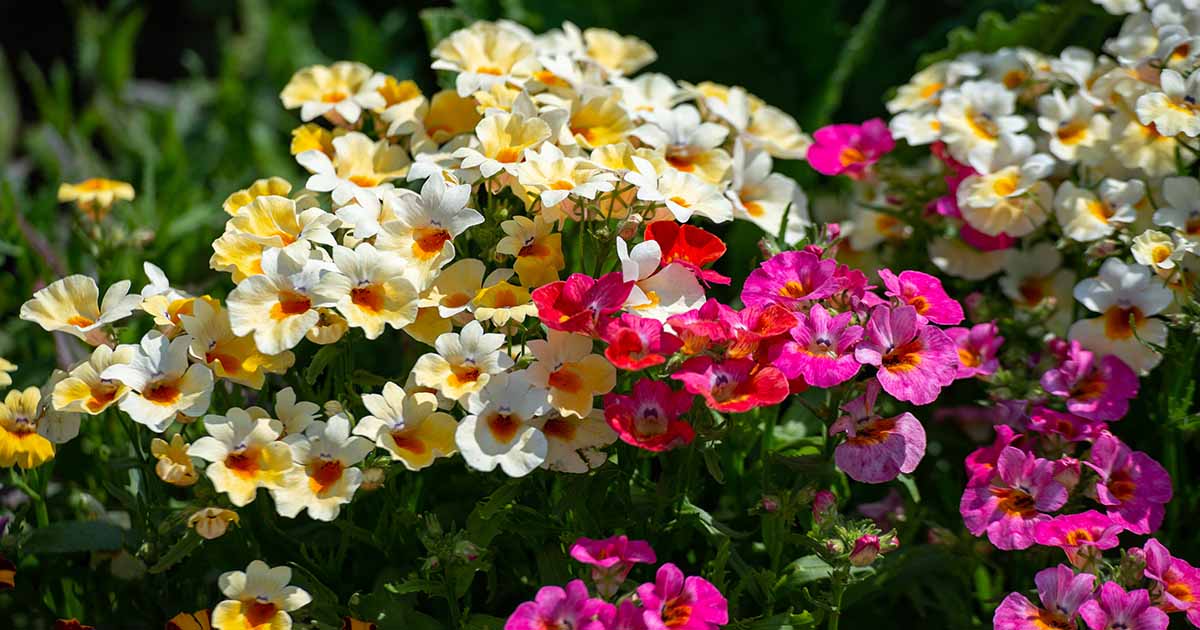
Nemesia spp.
Whether it’s seen in the Apple logo, a hair part that’s off to the side, or even your child’s delightfully unskilled drawing for the refrigerator, a bit of asymmetry can actually look pretty neat.
In the plant world, you needn’t look further than nemesia plants for proof.
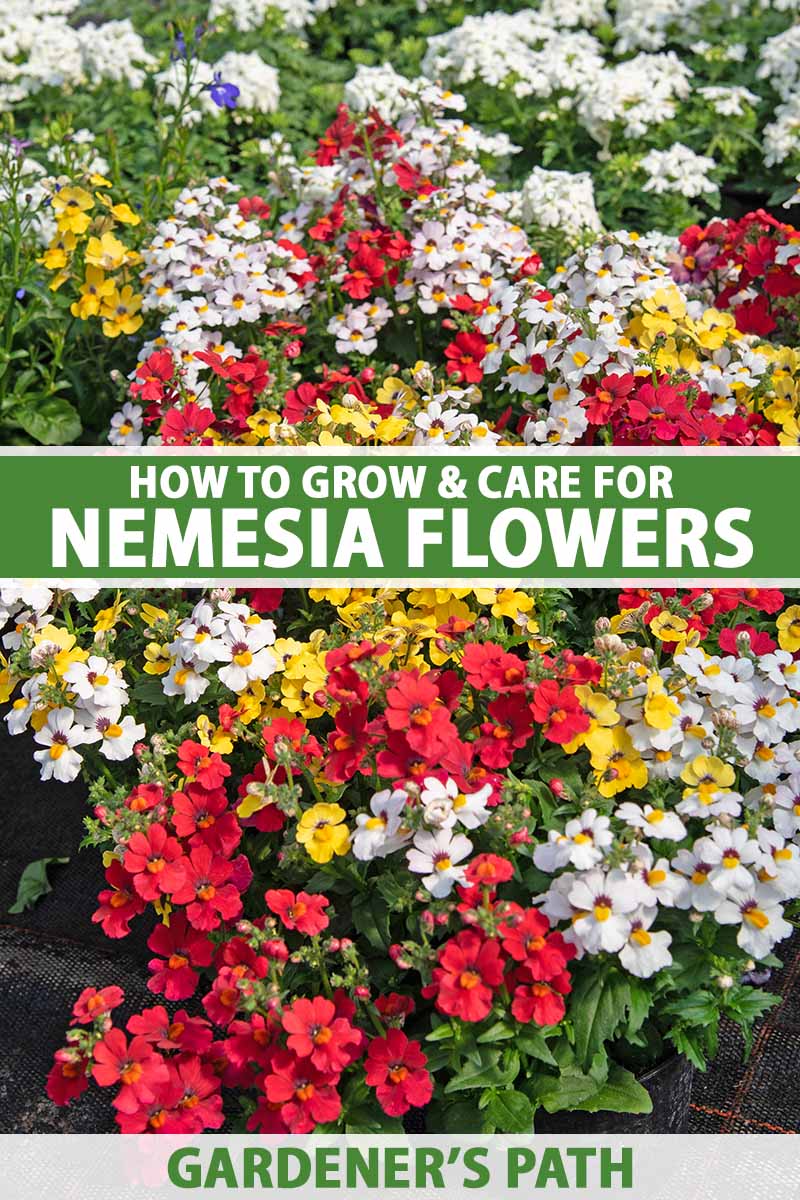
We link to vendors to help you find relevant products. If you buy from one of our links, we may earn a commission.
Their colorful flowers have two petals that differ in shape, lobe count, and sometimes even hue, all combined in a way that’s visually compelling.
Add a backdrop of lovely leaves to the mix, and you’re left with a group of plants that deserve your attention and gardening time.
But if you’re growing a beautiful new plant for the first time, then you owe it to yourself to know how to do so properly from the get-go. And that’s where this guide comes in.
We’ll give you the low-down on nemesia plants: how to propagate them, cultivate them, maintain them, and more!
And hopefully, as you learn how to grow nemesia, your appreciation for these plants will grow as well.
Here’s what we’ll be diving into:
Shall we begin?
What Are Nemesia Flowers?
Flowering species of the Nemesia genus belong to the Scrophulariaceae or figwort family and they can trace their origins to southern Africa.
Suited to a range spanning USDA Hardiness Zones 2 to 11, the genus contains 69 recognized species of annuals, herbaceous perennials, and subshrubs, along with many cross-species hybrids.

Plants from the Nemesia genus are renowned for their striking, tubular flowers, which sit atop square stems while flaunting colored throats alongside two sets of lip-like petals.
While the top “lip” bears four lobes, and the bottom one has two.
These fragrant flowers can exhibit practically every hue save for green, attracting pollinators such as bees and butterflies.
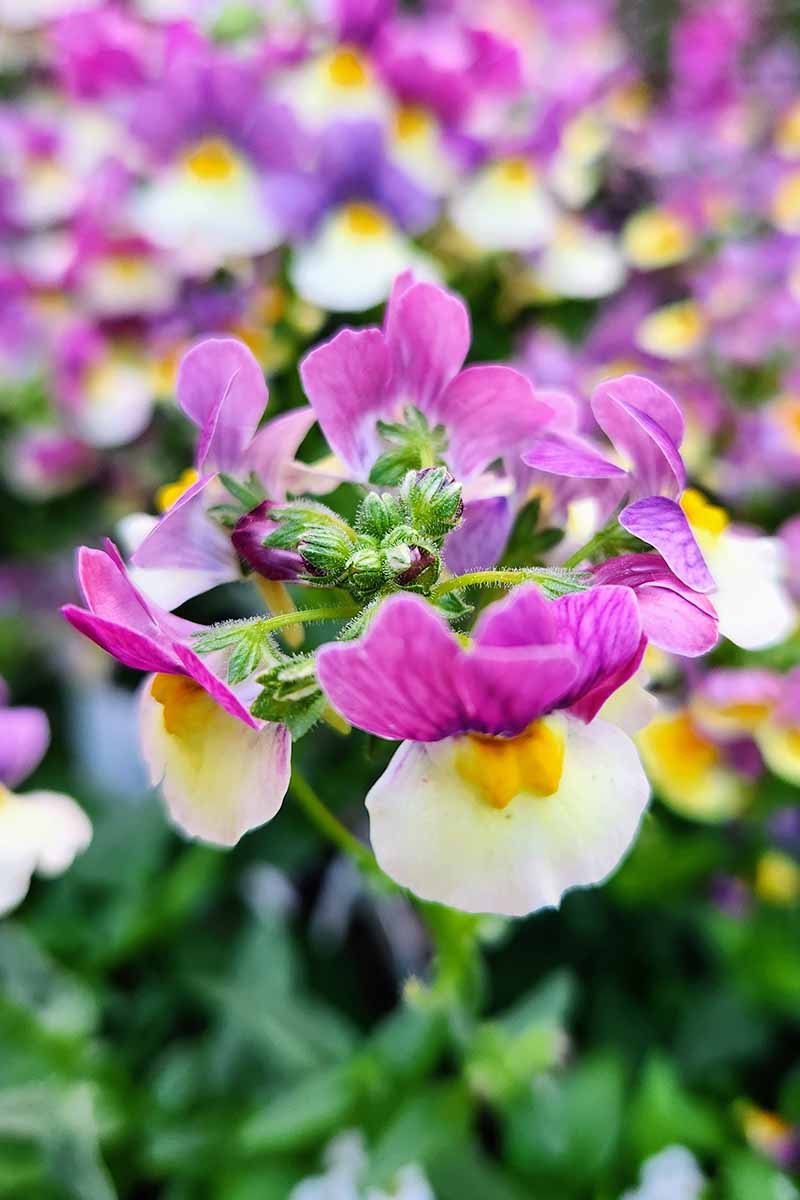
Surrounding the flowers are pairs of green, lance-shaped, and sometimes toothed leaves.
The size of the entire plant varies among species, but many garden favorites have heights and spreads of six to 24 inches.
In floriography, i.e. “the language of flowers,” nemesia flowers have come to represent friendship, making them the perfect ingredient for platonic floral arrangements.
In American gardening and landscaping, the beautiful blooms of these plants are often featured in spring to early summer or fall.
Nemesia Propagation
If you want to grow some of these plants for yourself, you’ll need to propagate them first, whether it’s by sowing seeds, rooting stem cuttings, or transplanting more developed specimens.
From Seed
Utilizing purchased seeds is a cheap, efficient, and easy way to end up with a bunch of Nemesia specimens. Make sure to select varieties that are capable of growing in your garden’s Hardiness Zone!
In spring, about four to eight weeks before the local final frost date – or just in early spring, if your Zone lacks frost – fill a seed tray with a seed-starting mix such as a combo of peat moss and perlite.
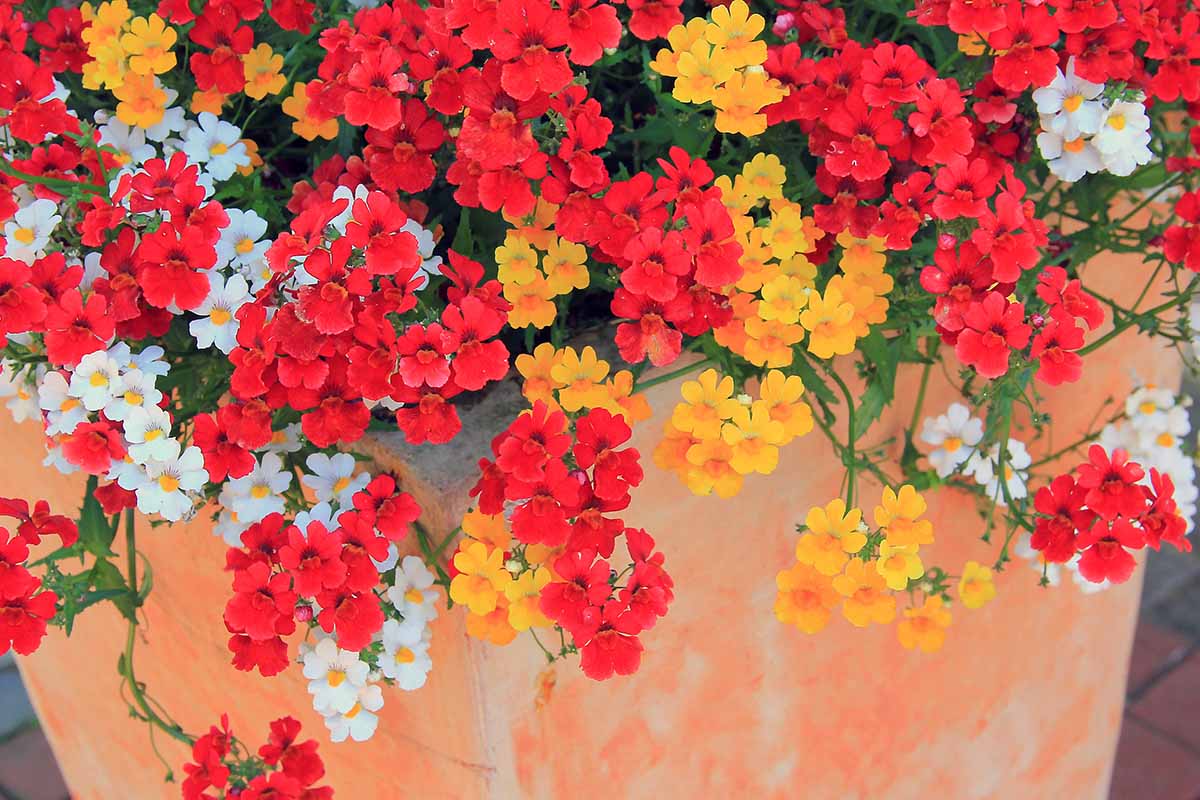
Moisten the media, then scatter your seeds across the soil’s surface. Cover them with the slightest layer of additional media, then leave the tray exposed to bright, indirect light somewhere indoors.
Keep the media moist. The seeds should sprout in about five to 10 days. As the seedlings begin to compete for space, thin out the weakest-looking ones so you’re left with strong, healthy seedlings spaced an inch or two apart.
Once the seedlings reach two inches in height, you can move them into their own individual pots filled with a similar medium as the seed tray.

Continue to care for them, providing bright light and moist soil. Pinch them back to encourage bushiness, if desired.
After four to eight weeks have passed and when your outdoor garden is frost free, you can harden off the seedlings outdoors.
To do this, bring the seedlings outside into an area with their preferred light exposure and leave them there for 30 to 60 minutes before bringing them back inside. Add an additional half to a full hour of outside time with each successive day until they can handle a full day of outdoor exposure.
At this point, your plants are ready to go into the ground or into more permanent containers!
From Stem Cuttings
If you want to propagate plants with the exact same genetics as their parents, then taking cuttings is the way to go.
It’s also useful when propagating hybrid varieties, as those can’t be grown from seed.
In late summer, use a sharp, sterile blade to take four- to six-inch cuttings from the ends of healthy-looking nemesia stems.
Bonide Bontone II Rooting Powder
Defoliate the bottom half of each cutting and dip the cut ends into a rooting hormone, such as Bonide’s IBA powder that’s available from Arbico Organics.
For each cutting, fill a three- to four-inch container with moistened soilless media and stick the cuttings in. Move the cuttings to where they’ll be exposed to bright, indirect light indoors.
Keep up the moisture in the soilless medium while the cuttings grow and develop, repotting as necessary.
Once the next frost-free date in spring rolls around, you can harden them off like you would seedlings before they go in the ground.
Via Transplanting
When it’s transplanting time, prepare planting spaces either in-ground or in containers.
Regardless of the planting medium that you opt to use, ensure that it’s well-draining and fertile with a pH of 6.0 to 7.0. Texture-wise, sandy and/or loamy soils are preferable to clay.
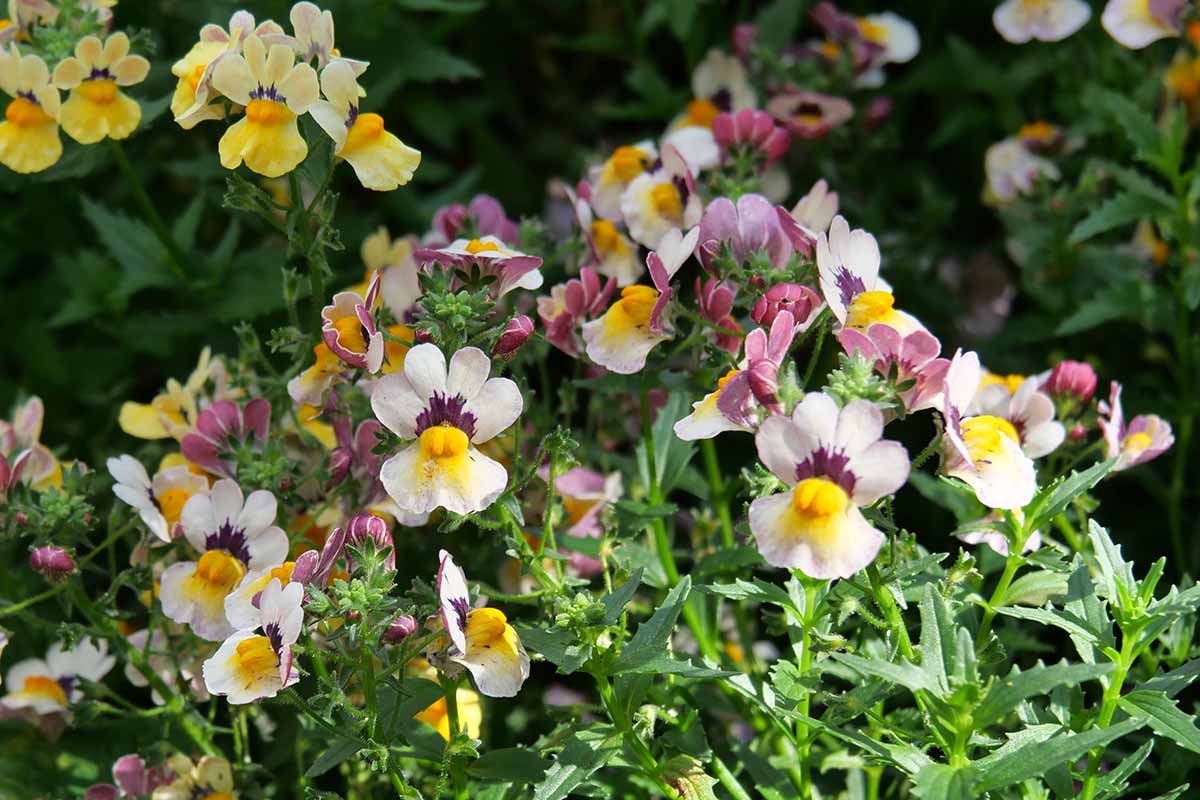
Space these sites out as wide as you need to, to accommodate the mature spreads of your transplants, and dig holes as deep as and just a bit wider than their root systems.
Next, gently ease the transplants out of their containers before setting them into their holes.
Backfill the holes with the dug-out soil, water in the transplants, and presto!
How to Grow Nemesia Flowers
Now that your nemesia plants are safe and snug in their new homes, let’s discuss how to keep them healthy and happy throughout their stay.
Climate and Exposure Needs
These plants can thrive in a wide range of climates.
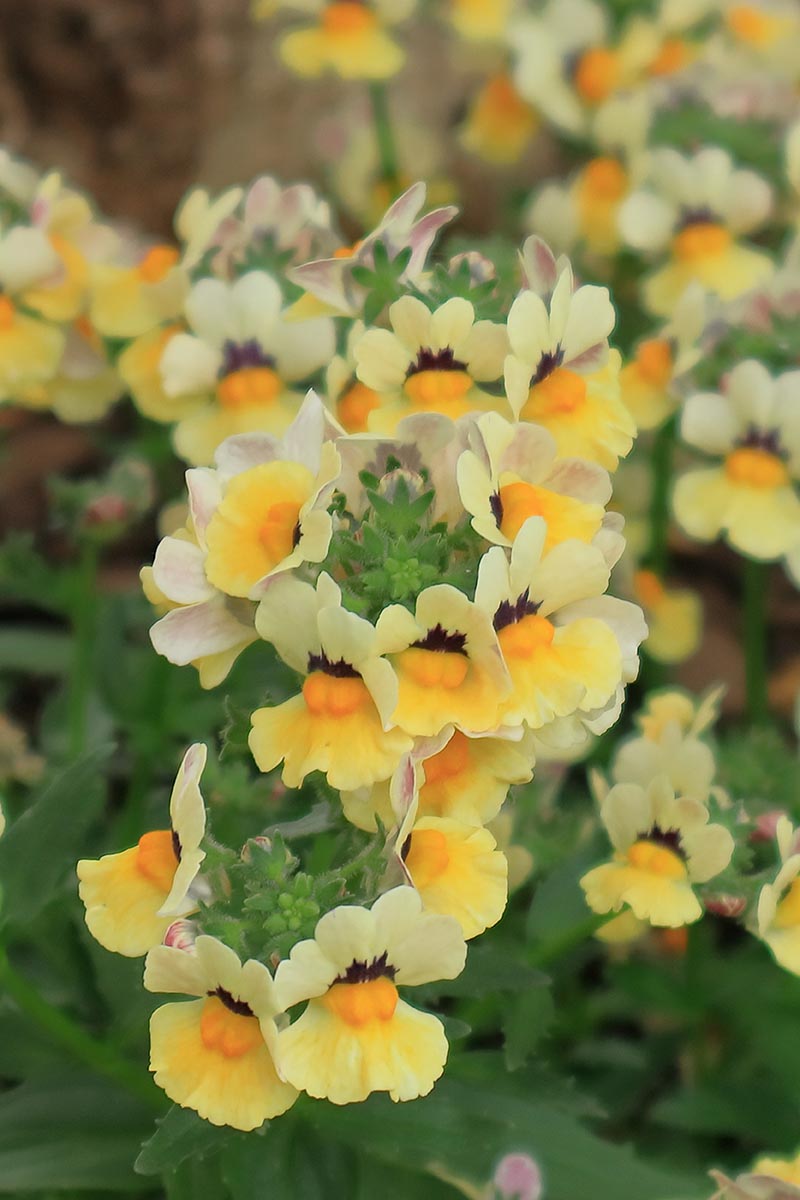
Depending on the species, plants may require a full sun to partial shade exposure.
This obviously depends on the variety that you choose, but for the most part, full sun brings about more blooms, since flower production requires a lot of photosynthesis.
Soil Needs
It’s worth repeating: ample drainage, fertility, and a slightly acidic to neutral pH of 6.0 to 7.0 are the essential ingredients for optimal nemesia soil, along with a sandy and/or loamy soil texture.
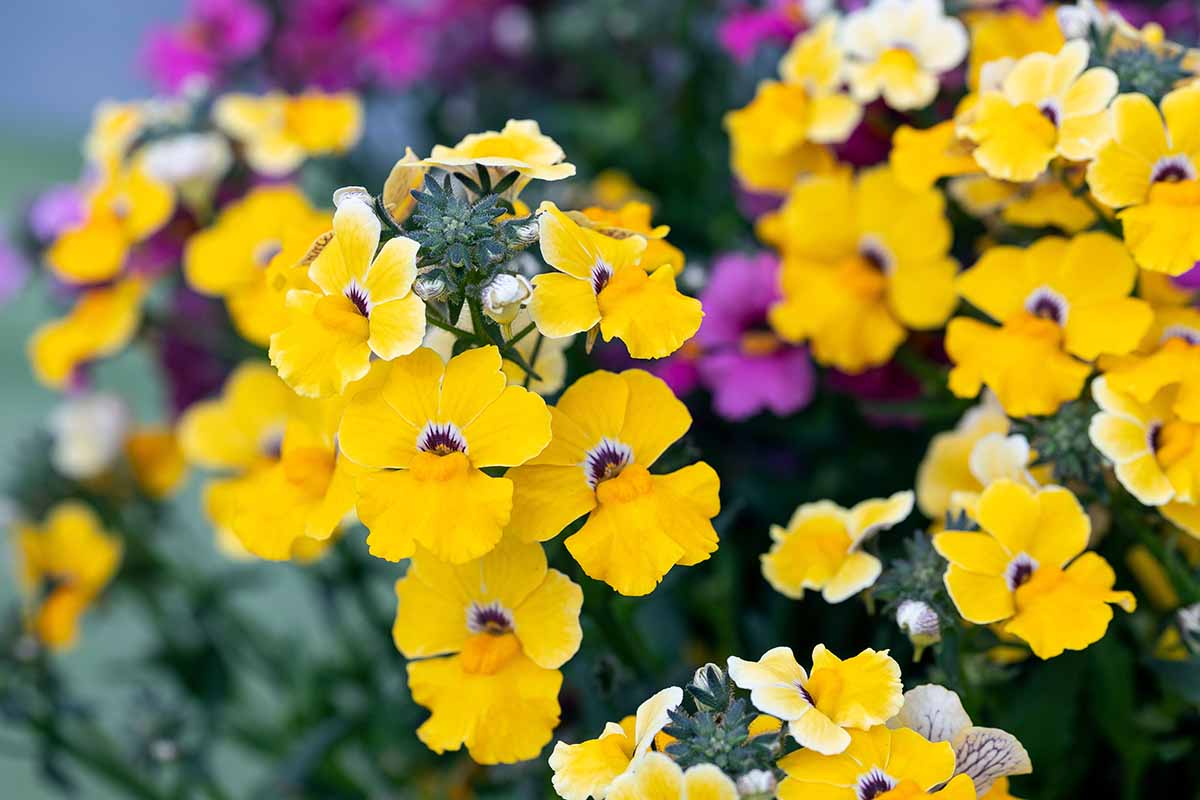
Annual amendments of organic matter in springtime will help with fertility and drainage.
Working a couple inches of humus such as compost or well-rotted manure into the soil each spring is a solid prescription.
Water and Fertilizer Needs
Generally, nemesia plants grow well when constant moisture is provided… but not too much. Think “moist” and “damp” rather than “wet” and “soggy.”
An application of a balanced, slow-release fertilizer every spring should help with providing the essential nutrients.
If you’re looking for such a product, Osmocote’s 14-14-14 NPK granular fertilizer will feed your plants for up to four months! If you’re interested, it’s available from Amazon.
Growing Tips
- For most nemesia varieties, optimal flowering requires full sun.
- Amend the soil each spring with a couple inches of humus.
- Keep the planting medium moist!
Pruning and Maintenance
The majority of your nemesia pruning will entail deadheading, or removing spent flowers, as well as removing any damaged, diseased, or dead plant tissues.
If a specimen is struggling or has ceased to bloom due to summer heat, cutting back the plant by one-third to one-half can promote reblooming and healthy new growth.

Putting down an inch or two of organic mulch around plants can help prevent moisture loss, suppress weed growth, and add a neat aesthetic to your landscape.
But make sure to keep the mulch at least two inches away from the crowns to avoid introducing rot!
To promote overall plant health and avoid root bindage, container-grown nemesia should be repotted as they outgrow their homes.
Providing the root system with an inch or two of fresh, empty soil on all sides should be enough wiggle room.
Nemesia Species to Select
If you’re located in USDA Zones 2 to 11, there’s a variety of Nemesia for you. And depending on your selection, your specimens may possess a tolerance for heat, humidity, and/or frost!
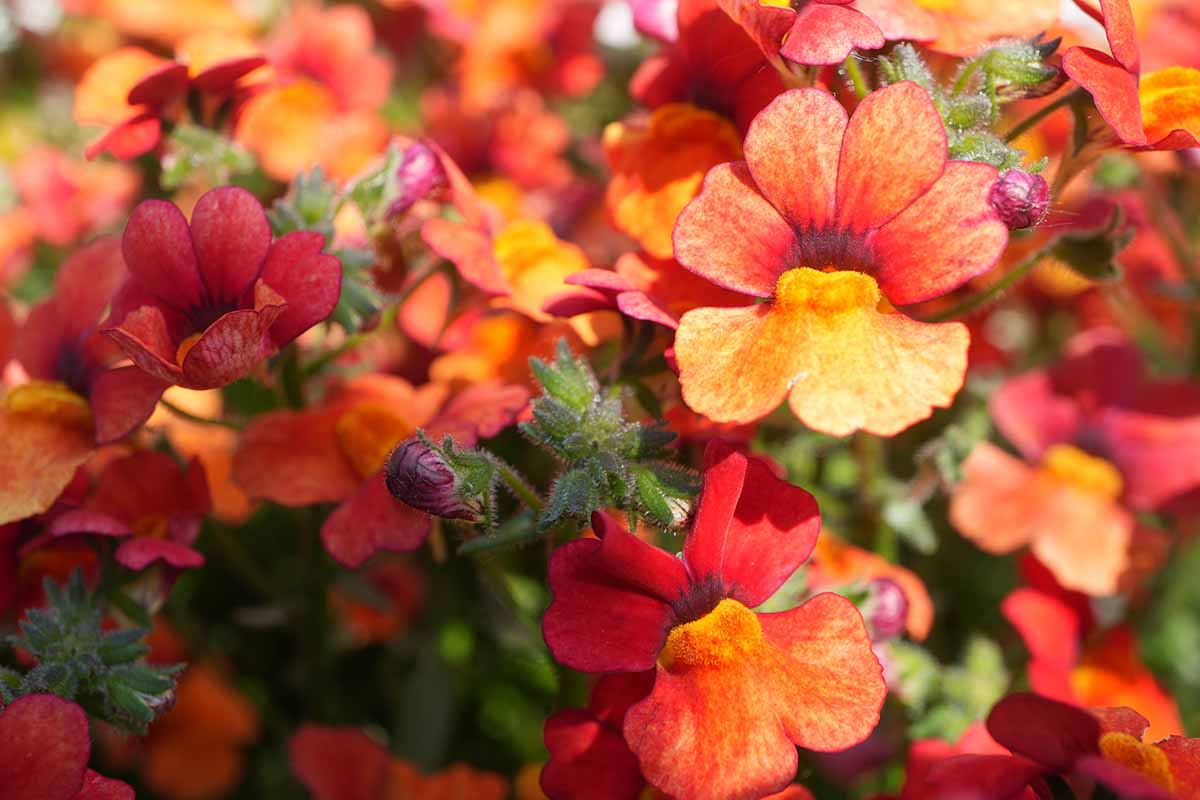
Whether you head to a physical plant nursery or do your shopping online, you can find Nemesia species in a plethora of different colors and sizes. But which one to choose?
These three are solid choices:
Caerulea
Hardy in USDA Zones 9 to 10, N. caerulea typically grows to a height of one to two feet with a spread of nine to 18 inches.
Wielding smooth, lance-shaped leaves, this nemesia bursts with stunning flowers in early summer, each with white, pink, and/or light blue petals that surround yellow-colored throats.
Full sun will yield the best blooms, while a bit of afternoon shade will stretch out that blooming period the longest.
Strumosa
Reaching heights and spreads of six to 12 inches, N. strumosa is a bit more compact than its relative N. caerulea.
Hardy in USDA Zones 2 to 10, N. strumosa flaunts toothed, narrow foliage and summer-blooming flowers that come in many different hues, ranging from reds to yellows to whites and more.
Intrigued? This packet of N. strumosa ‘Blue Gem’ seeds from Eden Brothers will yield beautiful, low-growing carpets of ocean blue flowers.
Versicolor
Can’t decide on a single hue, huh? Well, with a specific epithet like “versicolor,” you can rest assured that N. versicolor really packs a diverse palette.
With mature dimensions of a foot in height and nine inches in width, N. versicolor is hardy in Zones 9 to 10 and wields beautiful colors from across the spectrum in its blooms, save for green.
Oftentimes, you’ll find bicolored specimens, for double the fun!
Managing Pests and Disease
Thankfully, there’s not too much for the gardener to worry about when growing nemesia, health-wise.
Herbivores such as deer and rabbits tend to leave these plants alone, and the insects and diseases that do pose a threat are pretty manageable.
But as a general recommendation, many afflictions can be prevented with proper cultivation and TLC, since pests and pathogens tend to go after unhealthy specimens the hardest.
Insects
The neat thing about pest management? It also tends to limit diseases as a side benefit, since pathogens can hitch a ride on bugs all too easily.
Aphids
If you’ve been in the gardening game for longer than a New York minute, then you’ve probably run into these translucent, soft-bodied pests before.
Using their piercing-sucking mouthparts to extract vital fluids from plant tissues, aphids can leave plants chlorotic and wilted if infestations are severe enough.
Additionally, aphids excrete honeydew: a sweet, sticky substance that can attract ants and promote black sooty mold, the latter of which is not a fun time for plants.
Sprays of horticultural oil or insecticidal soaps can help to smother these pests. Try Monterey’s organic horticultural oil from Arbico Organics.
Bonide Insecticidal Super Soap
For an alternative, perhaps Bonide’s spinosad-infused insecticidal soap, also from Arbico Organics is what you’re looking for?
Thrips
From the order Thysanoptera, thrips are tiny, slender, winged insects that feed in a manner similar to aphids, leaving little “stipples” of discolored feeding marks in their wake.
As a result, infested leaves can become stunted, distorted, and prone to dropping prematurely.
Control of thrips is similar to that of aphids – using suffocating sprays of horticultural oil or insecticidal soaps.
Introducing beneficial predators such as green lacewings, pirate bugs, and parasitic wasps will also help keep these pests controlled. For the hookup on some thrip-munching critters, check out Arbico Organics.
Disease
Keeping sanitary in the garden is important for preventing diseases.
I’m not talking about eliminating the dirt and grime of hard garden work, but rather, using sanitized tools, healthy plant stock, and disease-free soils.
Powdery Mildew
A very easy condition to notice, powdery mildew is a fungal disease that leaves plant surfaces looking like they’ve been dusted with a fine white flour.
Along with looking conspicuously sickly, infected tissues can become distorted, turn yellow or brown, and even die.
Since fungi love moisture, it’s important to promote enough airflow and avoid splashing water onto the leaves. Space specimens apart appropriately, and irrigate the roots directly instead of watering from overhead.
In the case of an infection, prune away any severely symptomatic tissues. If the specimen is disease-ridden and unlikely to recover, lift and pitch it.
Learn more about powdery mildew in our guide.
Root Rot
What do you get when you mix a plant’s root system, too much moisture, and not enough oxygen? Why, you get root rot, of course!
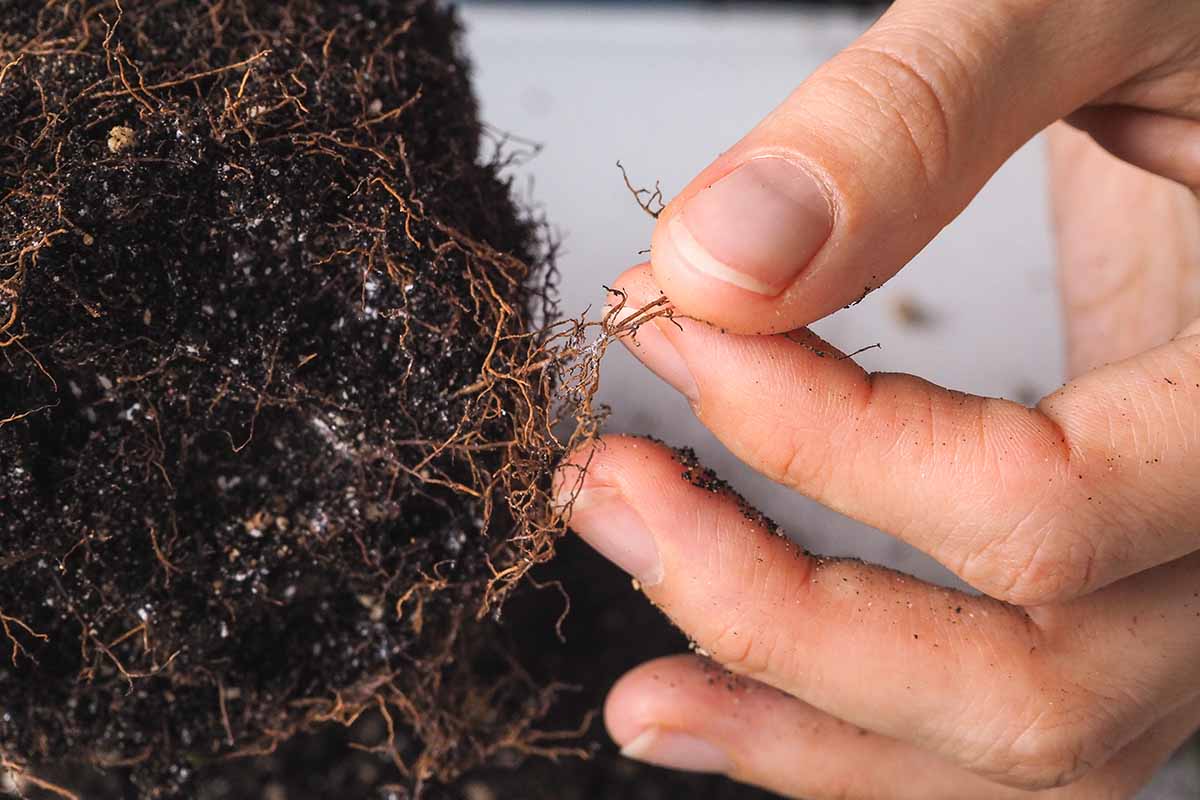
As the roots “drown,” they begin to turn necrotic, which causes major health issues for the shoots above the soil line.
To prevent this common ailment, don’t overwater your plants and ensure that their soils are well-draining.
If any specimens have rotted roots, prune them away and replant. If the majority of the roots are rotted, then the odds of survival are probably slim.
Best Uses of Nemesia Flowers
To be honest, any spot where pretty flowers can stand out as a feature is also a place that will probably suit a nemesia nicely.
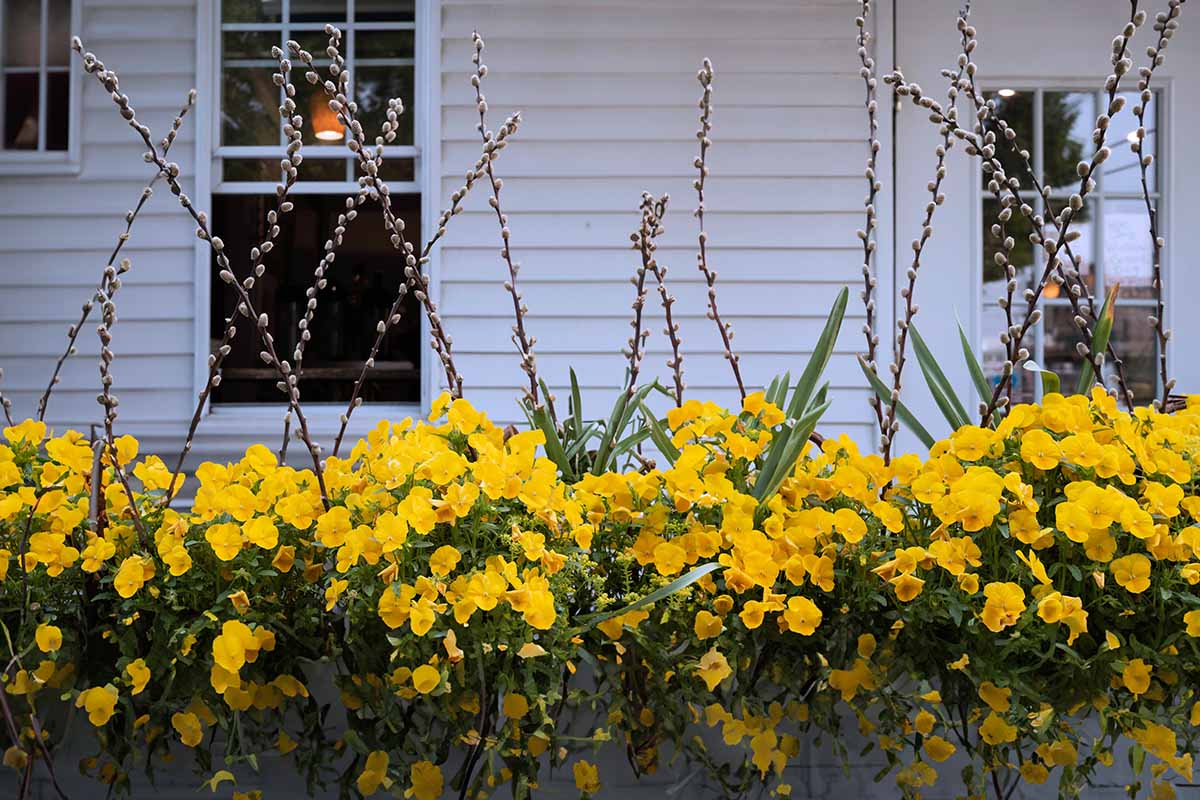
These plants look especially gorgeous in beds, as part of mixed borders, and in containers.
Depending on the size and color of the type that you’re working with, nemesia can also look stunning in rock gardens, as mass plantings, or as a ground cover.
If you’re looking for companion planting options, try placing other attractive bloomers like snapdragons, pansies, or pinks nearby.
Quick Reference Growing Guide
| Plant Type: | Annuals, herbaceous perennials, subshrubs | Flower/Foliage Color: | Most colors except green/green |
| Native to: | Southern Africa | Maintenance: | Moderate |
| Hardiness (USDA Zones): | 2-11 | Tolerance: | Heat, humidity, frost, partial shade (depending on variety) |
| Bloom Time: | Spring to fall (depending on location and species) | Soil Type: | Fertile, sandy and/or loamy |
| Exposure: | Full sun to partial shade | Soil pH: | 6.0-7.0 |
| Time to Maturity: | Depends on variety | Soil Drainage: | Well-draining |
| Spacing: | At least 6 inches | Attracts: | Pollinators |
| Planting Depth: | Just below the surface (seeds), depth of root system (transplants) | Companion Planting: | Planting: Pansies, pinks, snapdragons |
| Height: | 6-24 inches | Uses: | Beds, borders, containers, ground covers, mass plantings, rock gardens |
| Spread: | 6-24 inches | Family: | Scrophulariaceae |
| Water Needs: | Moderate | Genus: | Nemesia |
| Common Pests and Diseases: | Aphids, thrips; powdery mildew, root rot | Species: | Caerulea, strumosa, versicolor |
Make Room for the Bloom
If you haven’t yet zoned off a part of your garden for some Nemesia specimens, then I’d highly recommend doing so.
I mean, with the way these flowers look? It definitely warrants some reserved real estate in your landscape.
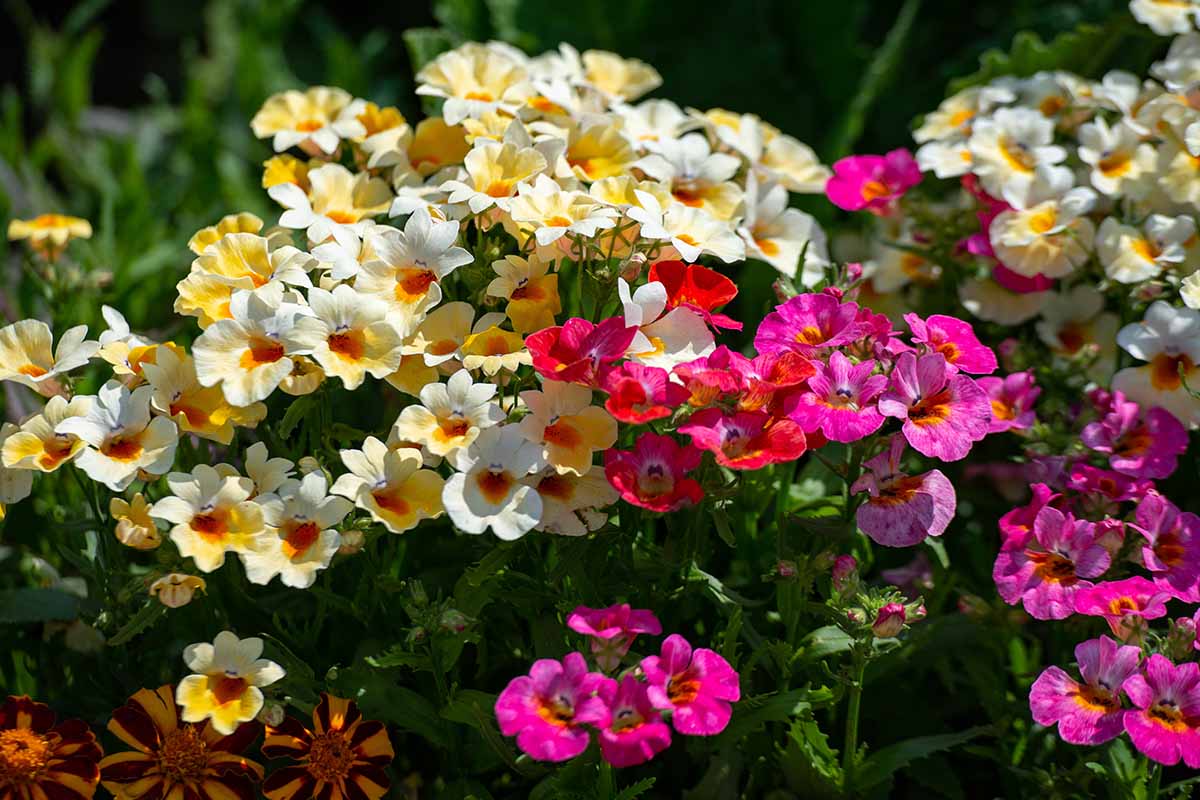
Have fun caring for these wonderful plants! And don’t worry – growing them definitely becomes easier the longer you do it.
Have experience with nemesia that you’d like to share? Still have more questions? All of this and more can go in the comments section below. We’d love to hear what you have to say!
Want a garden that comes into bloom with a bang? Here are some more gorgeous bloomers to add to your floral arsenal:
